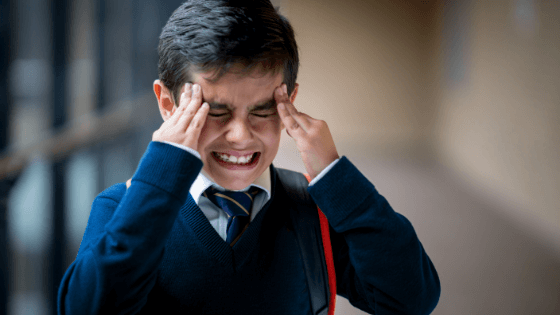Sustaining individuals and communities

If you have a school aged child, then you no doubt know all about after school meltdowns. They seem to come from nowhere, with no warning and no obvious trigger. Sometimes they start with an argument with a sibling during the car ride home. Sometimes it’s when you ask your child a simple question when you walk in the front door. And sometimes it seems to start from the moment you greet them at school.
And what makes these meltdowns even more confusing for us as parents, is that the feedback from the teacher is generally that your child has had a good day. A good week. A good term. That they are settling in well to their new classroom. That they are polite and respectful during class. That they are making friends and getting along well with others. That they have been an absolute dream.
So then who is this child who is coming home with you? Why are you seeing a completely different picture? Is it you?
Well, yeah. Kinda. But not in the way you might think.
Read More →
Earlier this week one of my lovely Mindfulness for Children brought a post about calming tools and calm down corners to my attention. The post suggested that using calming tools for kids was teaching them to shut down their emotions. That using a calm down corner with kids sends them the message that we do not want to hear about their big, “negative” emotions. And that placing too much emphasis on calming down is simply another way of distracting children from emotions and teaching them to hide them from us.
Read More →
The start of the school year brings with it all sorts of emotions. Nervous excitement. Hopeful anticipation. Happiness to be reunited with friends. Relief to be returning to routine and structure. Disappointment over the end of summer holidays that always feel too short. Dread over the return of those blasted school lunches. And of course, fear and anxiety about what the new school year may bring.
But ultimately, as our precious, back-pack laden babes head bravely into a new school year, most parents are wishing for the same thing. We want our kids to have a happy, successful school year. Whatever that may look like for them.
And with a little bit of forward planning, we can ensure our children really thrive at school this year. We can equip them with the tools, skills and support they need to have a successful school year. Here’s how.
Read More →
Sze Quak awoke one morning to hear her seven-year-old daughter, Alice, singing alone in her bedroom. “She made up a song about wanting the coronavirus to be gone soon and wanting to go back to school,” Quak says. An only child, Alice has been confined in their Fullerton, California, home attending virtual classes since March. “Before COVID-19, she didn’t really want to go to school. Now, she’s begging to go back.”
Read More →
If you’re a parent, then you have no doubt witnessed some BIG emotions in your children. And a lot of the time, those big emotions can really leave you feeling overwhelmed and unsure how to respond. But of course, you do want to help your children in these moments, right?! So maybe you try to do or say things to ease their distress.
However, our attempts to help our children are sometimes not very effective, or can even make the situation worse. And that’s because we often attempt to distract them from their emotions, or try to convince them that things are not so bad. And while this is well intentioned, it can be experienced by our children as dismissive and invalidating. Do any of these sound familiar?
Read More →
Shortened cold, gray and damp
days are hardly elements that motivate us to get outside, right? When I
talk with teens in my office about spending time in nature,
particularly in the winter months, the conversation quickly shifts to
avoiding the cold and waiting until Spring when things warm up and
everything starts to brighten and bloom again.
I
get it. We’re more inclined to associate winter as a time for solitude
and it's important to make time for rest, but the reality is when we
allow the conditions of each season to control our relationship with the
natural world, our preferences may result in waiting out the
“uncomfortable” for the more “comfortable” and before we know it, we
can end up spending days, even months stuck inside.

Fostering a sense of belonging in a family is an important part of cultivating a positive family culture. It is vital for our children that our homes are a space where they feel safe, connected, loved and accepted unconditionally.
Children need to feel they belong. And they need to feel that they are a part of something bigger than themselves – something important, and special. It is this sense of belonging that builds resilience in our children. It helps them develop healthy self esteem and self identity and gives them the confidence they need to manage challenges, to solve problems and to ask for help when they need it.
But a positive family culture doesn’t just happen on its own. Building a healthy, loving home – and family – requires intentionality. It requires us as parents to set clear guidelines – a pathway for us and our children based on our own big vision for what we want our family to look and feel like. And a great way to do this is by creating a family mission statement.
Read More →
During pandemics, personal choices determine whether we contain or spread the virus. Our decisions also govern something even more contagious—our emotions. When they’re out of control, one person’s irritability can poison the whole family’s happiness. But, if we understand and harness transmissible emotions, they can (like a vaccine) protect family wellbeing.
Read More →Who is the course for:
Learning objective: